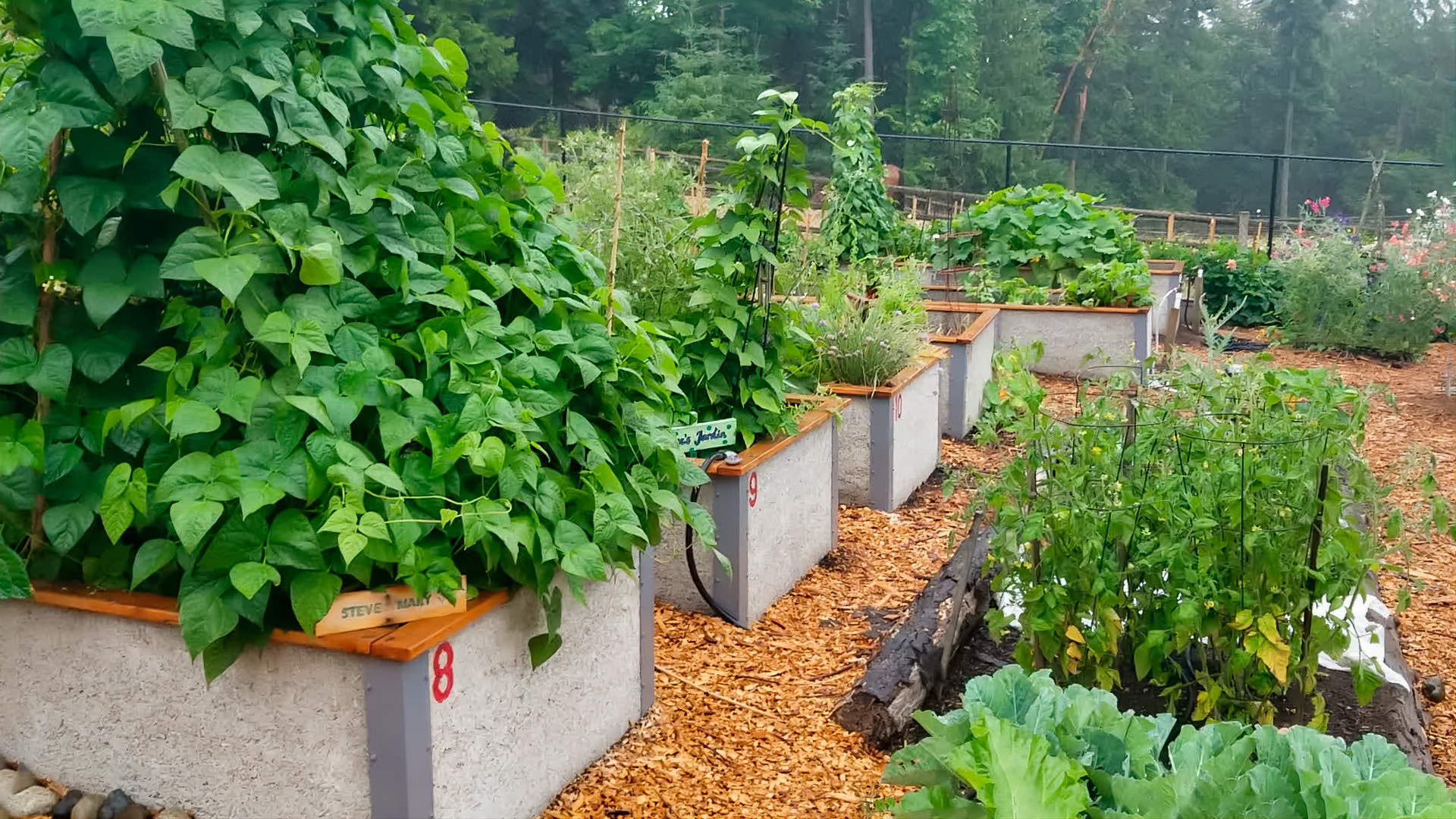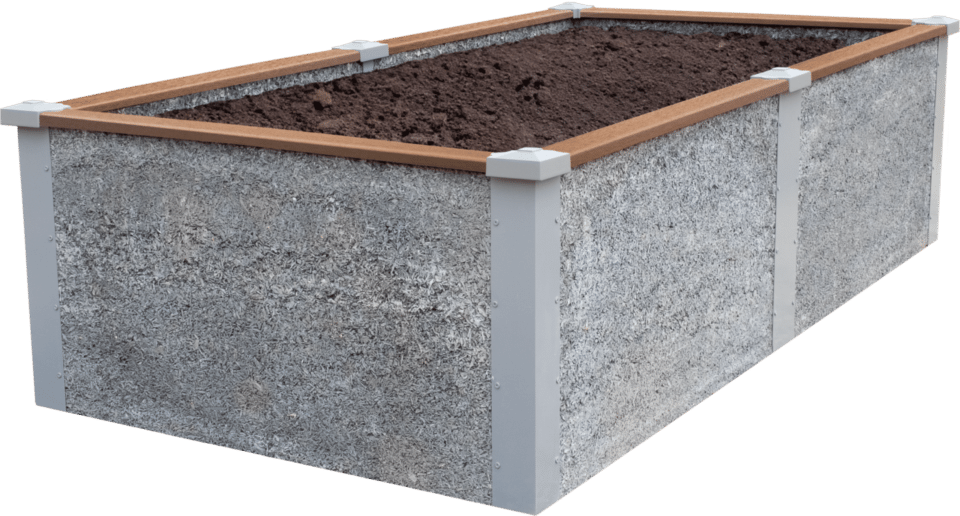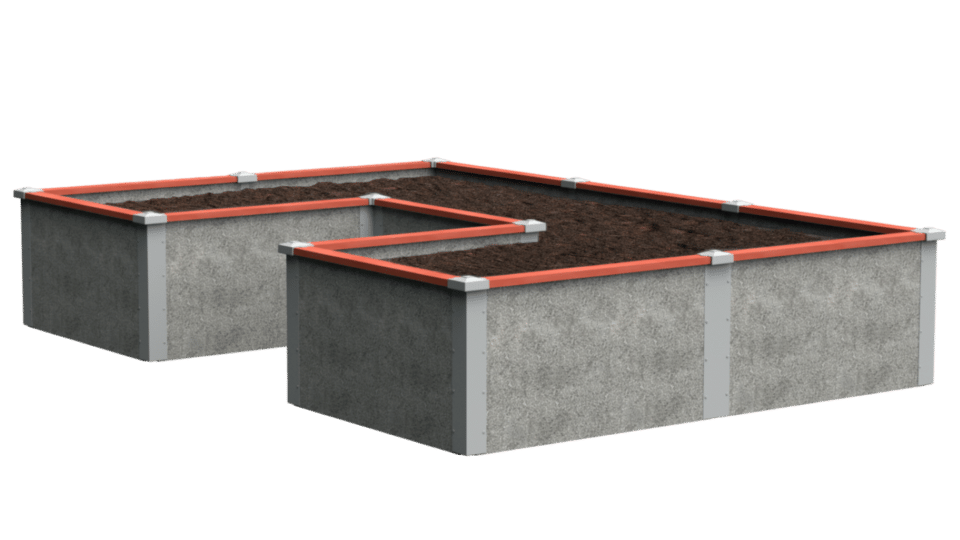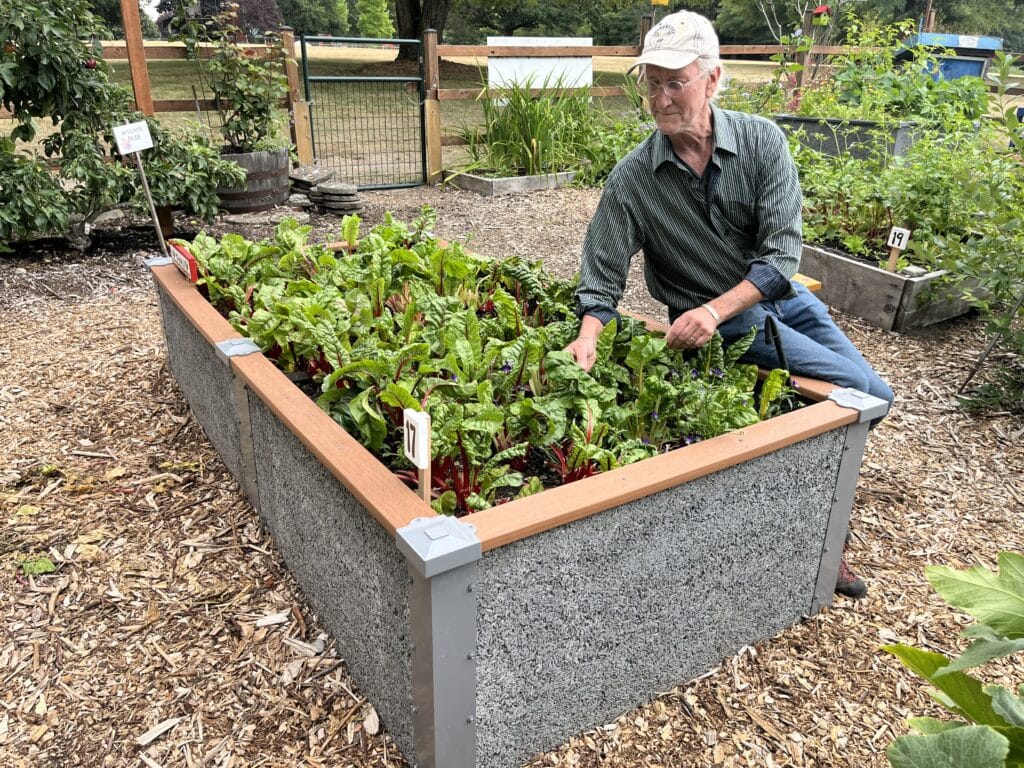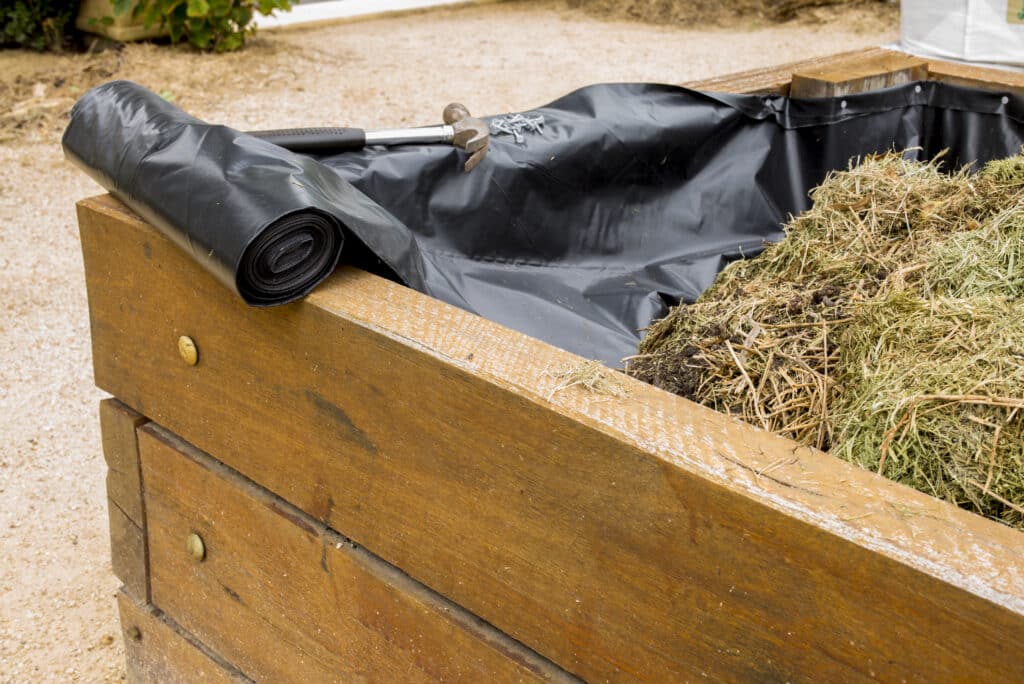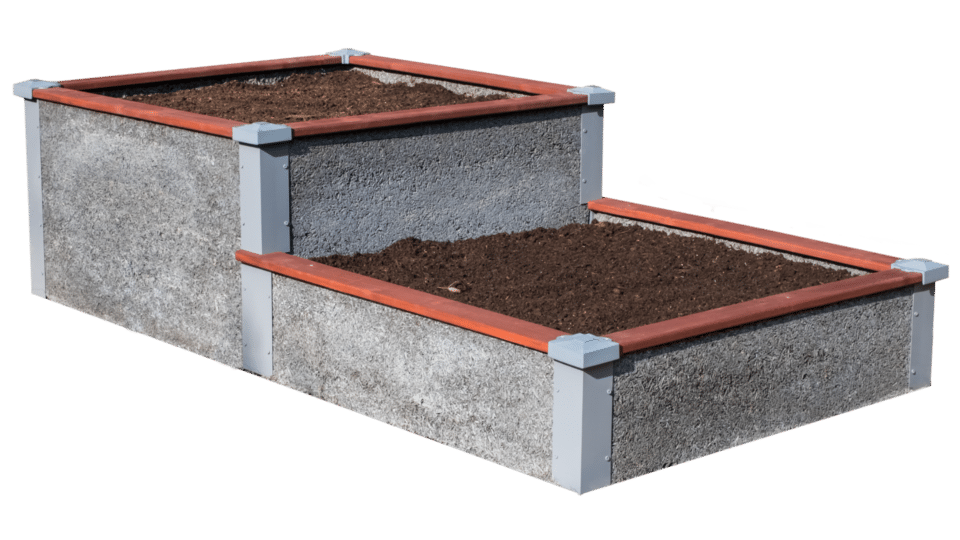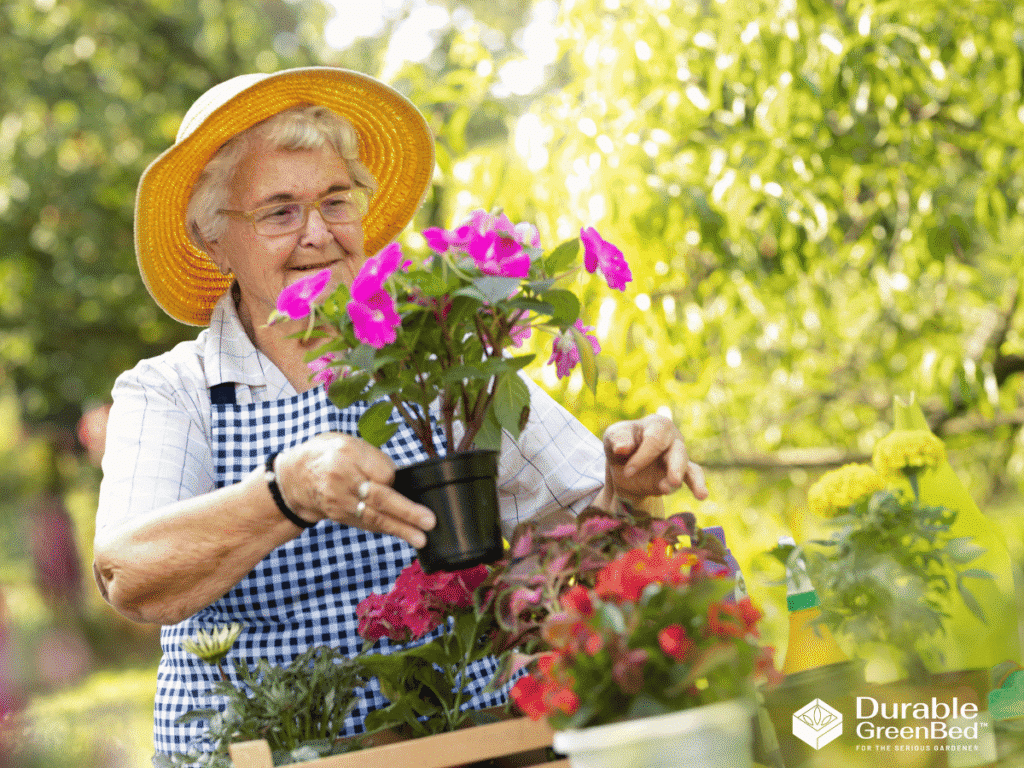
Yes, you can put plants or seeds in the ground and enjoy at least some success with a garden. But you’ll reap the most rewards when you go into high yield vegetable gardening with a plan, from the ground up. The type of garden bed you use, the plants you buy, and the spacing of your plants all makes a difference. Here are our top tips for how to increase vegetable yield in your raised garden bed.
Tip #1 Choose The Right Materials For Your Raised Garden Bed
You’ll enjoy higher fruit and vegetable production with deeper garden beds. Not all plants have naturally deep roots, but those that do benefit from more root depth. Roots that are able to grow deeply anchor plants better. They grow more roots, which allows the plant to uptake nutrients more effectively. And, deeper roots help plants withstand drought better. Deeper raised beds allow for better drainage too.
Tip #2 Choose High Yield Vegetables
There are many high yield vegetables for small gardens. If you’re looking to get the most produce per square foot, choose veggies that are known to be prolific. Cherry and grape tomato varieties in particular, will result in the greatest quantity of tomatoes. You’ll also get more medium-sized tomatoes than you will get of the largest kinds. Vining cucumbers will produce in abundance, especially if you pick them regularly. Also, squash such as zucchini will keep coming if you keep picking. Bush beans are prolific producers. Believe it or not, planting okra can help you maximize your produce. Okra grows like crazy in the heat of the summer. Ask at your nursery for their recommendations for prolific producers and high yield vegetables for small gardens for your gardening zone.
Tip #3 Design A High Yield Vegetable Garden Plan
Raised beds help maximize garden space because you don’t have to use space for walkways. Planting in squares or rows may look neat, but it uses space less effectively. Instead, arrange your plants in triangles. By doing so, you’ll be able to fit more plants into the same space. Don’t crowd them though! Another thing to consider is the sunlight. Plant tall plants where they won’t shade other plants. On the other hand, planting a tender crop like lettuce under the shade of a taller plant can keep your lettuce producing a little bit longer. As a general rule, tall crops should be planted on the north side of your garden and short crops on the southern side.
Tip #4 Use Good Soil
If you can’t make your own rich compost and soil, look for the best soil to buy for vegetable gardening. Experts agree that rich soil that is deep, organically fed with nutrients, and crumbly in structure produces the healthiest roots. You can enrich soil with compost and organic matter such as composted leaves. Make or buy the highest quality compost you can. The richer the compost the more nutrients are available for your plants. Macronutrients your soil needs are the obvious — N, P, and K. Additionally, the best soil you can buy for a vegetable garden should also contain micronutrients and trace minerals such as sulfur, manganese, iron, copper, zinc, carbon, magnesium, calcium, boron, and iodine.
Tip #5 Implement Succession Planting
Create a map or timeline of what you will pull out and when, and what you will replace it with. Succession planting can mean more than one thing. Plant more than one crop of things that grow quickly, such as radishes. Another way to implement succession planting is to choose different varieties of the same crop that have different maturity dates — ultra early tomatoes followed by late-season tomatoes, for instance. In the same amount of space you could plant lettuce in the spring, an early-maturing tomato, followed by cabbage for a winter crop. Interplant radish seeds with carrot seeds. Radishes are usually available for harvest after about five weeks, and carrots take seven or so. These types of strategies are easy things to do for a high yield vegetable garden plan.
Conclusion
No one starts a garden and says, “I hope to get just two of these green peppers, and a handful of tomatoes will be fine.” No! If you’re going to install raised beds that will last for years and put the effort into your garden, you want to get the maximum amount of produce possible. Gardening can sometimes be tricky, that’s for sure. But some basic strategies around what plants you buy and where you put them are sure-fire ways for how to increase vegetable yield.
There's Nothing Like Durable GreenBeds
It's the Walls!™
- Breathable
- Well Draining
- Higher Yields
- Prevents Slugs and Pests
- Non-Toxic
- 20-25 Year Lifespan
Shop Durable GreenBed Kits
-
Rectangular Raised Garden Bed Kit
$471.00 – $2,085.00 Select options This product has multiple variants. The options may be chosen on the product page -
L-Shaped Raised Garden Bed Kit
$786.00 – $1,305.00 Select options This product has multiple variants. The options may be chosen on the product page -
U-Shaped Raised Garden Bed Kit
$1,199.00 – $2,446.00 Select options This product has multiple variants. The options may be chosen on the product page
Shop Durable GreenBed Raised Garden Bed kits
-
Rectangular Raised Garden Bed Kit
$471.00 – $2,085.00 Select options This product has multiple variants. The options may be chosen on the product page -
L-Shaped Raised Garden Bed Kit
$786.00 – $1,305.00 Select options This product has multiple variants. The options may be chosen on the product page -
4’x8’ Stepped Raised Garden Bed Kit
$865.00 – $1,073.00 Select options This product has multiple variants. The options may be chosen on the product page -
U-Shaped Raised Garden Bed Kit
$1,199.00 – $2,446.00 Select options This product has multiple variants. The options may be chosen on the product page

